.
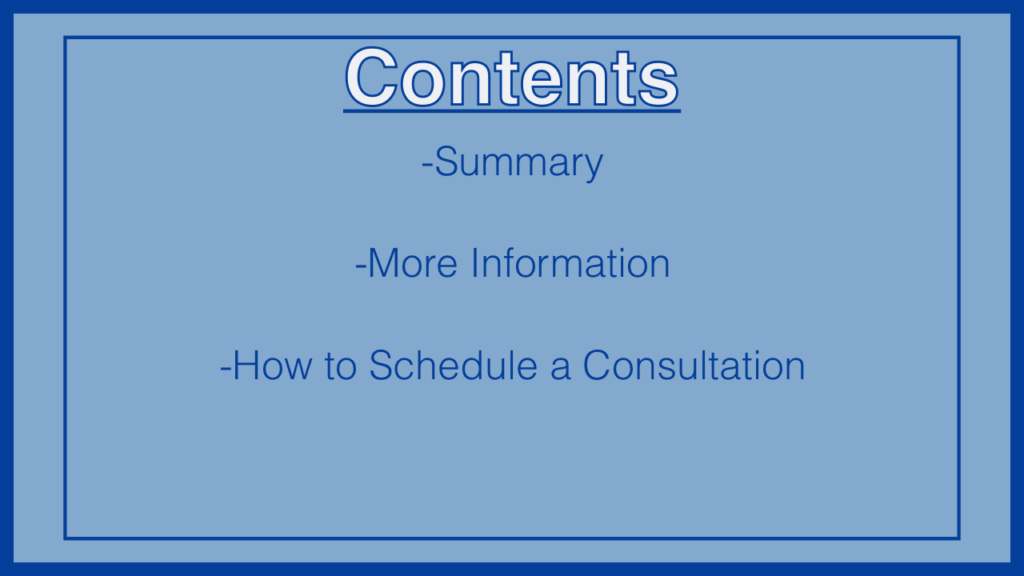
.
New soft tissue augmentation products, commonly referred to as “dermal fillers” or simply “fillers”, have emerged as an increasingly popular treatment for expression lines and facial contour changes. Dermal fillers may not be a replacement for facelifts, but many people are finding them to be an attractive option for dealing with early aging changes without the expense or “downtime” of surgery. In fact, dermal fillers are the second most common non-surgical procedure with over 2.5 million being performed each year.
Dermal fillers can improve the appearance of deep facial wrinkles, folds, lines, and acne scars, enhance the lips, and contour facial features like the chin and cheeks.
Restylane, Juvéderm, and Belotero are made of hyaluronic acid, a natural substance found in all species which is highly attracted to water and has the ability to bind to it. The results are very natural and long-lasting, with the effect remaining for six months or longer.
Radiesse is an injectable filler which can be used to fill in lines and reshape the facial contours. Radiesse can improve the appearance of nasolabial folds and marionette lines, and it can augment the cheeks, chin, and jaw line. Radiesse is made of biocompatible calcium particles which stimulates collagen growth, providing an initial plumping along with extended correction for one to two years as the new tissue regenerates.
Dermal filler treatments can be performed in our office. Depending on the area being treated, the procedure can take as little as five minutes to as much as thirty minutes to complete. A topical anesthetic, local anesthetic, or nerve block may first be administered for the patient’s comfort before injecting the dermal filler directly into the skin with a very fine needle.
Dermal fillers have very few side effects. Some patients may experience redness or swelling at the injection site which can last for a few days. Nevertheless, work and other normal activities can be resumed right after treatment. Dermal fillers are safe and effective injectables that can be used for all skin types and colors and do not require prior skin testing.
Sculptra is a semi-permanent filler made up of Poly L lactic acid, which is broken down by the body to carbon dioxide and lactic acid. It comes as a powder in a vial that has to be mixed 3 to 36 hours before being injected into the face, below the skin’s surface. Immediately following the treatment, most people are elated to see their crease and wrinkles gone. Initial improvement is mostly due to mild swelling, but the product delivers a lasting result.
Over the days following injection, the swelling comes down significantly and most patients will require another treatment in a few weeks. Patients who continue with the product will take 2 to 3 treatments in order to gain significant correction. The results appear to get better over time, and weeks after the treatment, tiny bumps might be felt under their skin, but they shouldn’t be visible. Correction lasts approximately 1-2 years and possibly even longer. The disadvantages to treatment include the treatment price, and the fact that results are not immediate.
Sculptra is not used for small adjustments such as plumping lips. Sculptra is often recommended for survivors of HIV/ AIDS or other conditions which trigger lipoatrophy, the overall hollowing of the face. Sculptra helps to restore or improve the appearance of this extreme volume loss and depletion of facial fat.
Have you been worrying over laugh lines, creases, deep folds, and wrinkles in your face? Getting the skin you want as possible. Restylane is a unique filler that can lift fine lines and wrinkles, smooth folds and add volume to improve contour for a refreshed – natural looking appearance.
Restylane is a clear, biodegradable gel designed for reducing wrinkles and sagging skin under the eyes, enhancing the facial contours, and treating under–projected cheekbones and recessive chins and sculpting lips.
Together, we will discuss of Restylane treatments right for you
.
“Dermal Fillers E-book“
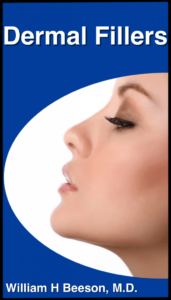
.
Juvederm
Purpose (Indications)
Soft tissue filler that adds volume
What It Does
Restores volume and fills moderate to severe facial wrinkles and folds, such as nasolabial folds (lines from the nose to the corners of the mouth)
Can enhance the appearance of the lip border
Technique
Topical cream applied prior to treatment
Usually injected around the mouth, perioral and/or buccolabial folds
Recovery Time
If redness or swelling is experienced, it will last less than 7 days
Recovery Instructions
Sunbathing and cold outdoor activities should be avoided until any redness or swelling disappear
Avoid touching the treated area within six hours following treatment. After that, the area can be gently washed
Avoid exercise and alcohol for six hours after your treatment
How Long It Lasts
Lasts up to 6 months or longer
More Information
Juvederm is a hyaluronic acid filler that can soften facial lines or creases. It also works extremely well to increase facial volume and improve skin elasticity. Juvederm “pumps” up the skin using a natural fluid in the body, helping to smooth away facial wrinkles and folds. Juvederm is well–tolerated with very minimal side effects, if any. Recovery time should take no more than a few days
Belotero
Purpose (Indications)
Soft tissue filler that adds volume
What It Does
Used to treat fine lines
Technique
Injected into fine lines, to contour around eyes and lips
Recovery Time
If redness or swelling is experienced, it will last less than 7 days
Recovery Instructions
Sunbathing and cold outdoor activities should be avoided until any redness or swelling disappear
Avoid touching the treated area within six hours following treatment. After that, the area can be gently washed
Avoid exercise and alcohol for six hours after your treatment
How Long It Lasts
Lasts up to 6 months or longer
More Information
Belotero is a hyaluronic acid filler that can soften fine facial lines and increase facial volume around the eyes and lips. Belotero is well–tolerated with very minimal side effects. Recovery time should take no more than a few days.
Radiesse
Purpose (Indications)
Soft tissue filler that adds volume
What It Does
Restores volume and fills moderate to severe facial wrinkles and folds, such as nasolabial folds (lines from the nose to the corners of the mouth)
Technique
Topical cream applied prior to treatment
Usually injected in buccolabial folds, chin, along jaw line, and nasal ponsum
Recovery Time
If redness or swelling is experienced, it will last less than 7 days
Recovery Instructions
Sunbathing and cold outdoor activities should be avoided until any redness or swelling disappear
Avoid touching the treated area within six hours following treatment. After that, the area can be gently washed
Avoid exercise and alcohol for six hours after your treatment
How Long It Lasts
Lasts up to 6 months or longer
Restylane
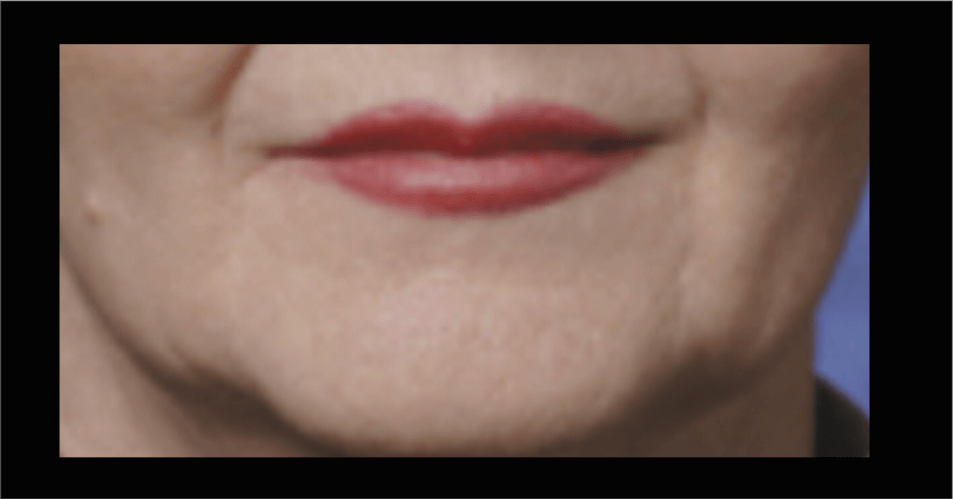
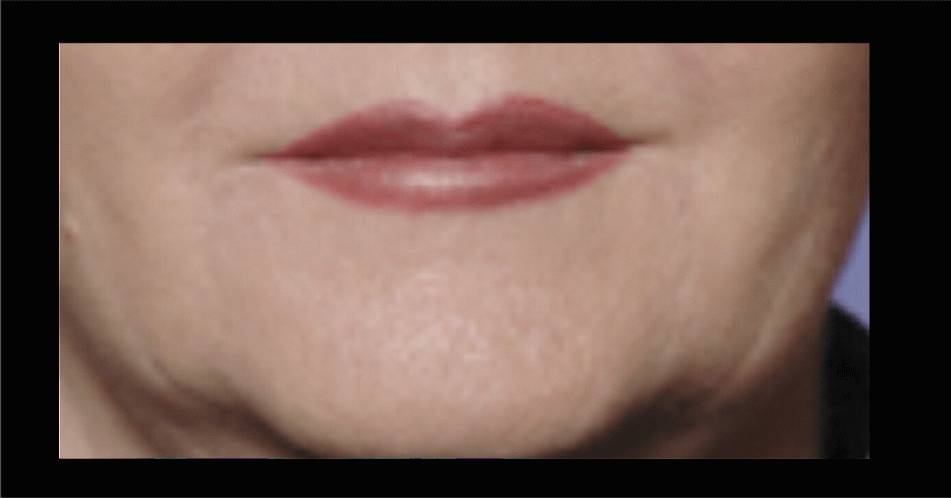
.
Purpose (Indications)
Soft tissue filler that adds volume
What It Does
Restores volume and fills moderate to severe facial wrinkles and folds, such as nasolabial folds (line from the nose to the corners of the mouth)
Can enhance the appearance of the lip border
Technique
Topical cream applied prior to treatment
Usually injected around the mouth, perioral and/or buccolabial folds
Recovery Time
If redness or swelling is experienced, it will last less than 7 days
Recovery Instructions
Sunbathing and cold outdoor activities should be avoided until any redness or swelling disappear
Avoid touching the treated area within six hours following treatment. After that, the area can be gently washed
Avoid exercise and alcohol for six hours after your treatment
How Long It Lasts
Last up to 6 months or longer
Radiesse as a filler made from biocompatible calcium ingredients that occur naturally in our body. It is used to restore facial volume and smooth out unwanted signs of aging. What makes radiesse unique is that as soon as its applied, it works with your buy to stimulate your own natural collagen for results a can last up to a year. It is a volumizing filler that gets rid of deep wrinkles and lines, and can add contours to areas of the face that have loss shape due to sagging skin, such as the cheeks and jawline
Radiesse works immediately by stimulating collagen, the protein in your skin that gives it smooth texture and youthful elasticity. Radiesse is absorbed, and eventually your body’s natural collagen “plumps” the areas that the gel leaves behind. You see results immediately.
Like most injectables, radiesse treatments are fairly painless. We have options for ways to make the injections more comfortable for your procedure. The best candidates for radiesse are in good health, are generally be between the ages of 35 and 65, and should understand how long the results will last varies between patients. Radiesse has a low risk profile and recovery time, and the benefits can be excellent.
Additional Information on Dermal Fillers
New soft tissue augmentation products commonly referred to as “dermal fillers” or simply “fillers”, have emerged as an important armament in the cosmetic surgeon’s arsenal for battling signs of aging. These products, along with neuromodulators such as Botox and Dysport, have become increasingly popular for the treatment of expression lines and facial contour changes. Dermal fillers may not be a replacement for facelifts, but many people are finding them to be an attractive option for dealing with early aging changes without the expense or “downtime” of surgery. In fact, dermal fillers are the second most common non-surgical procedure with over 2.5 million being performed each year.
Fillers may be termed “linear fillers” that work by directly filling in or occupying space to elevate the tissues. Other fillers, such as PLLA fillers, function mainly by actually stimulating fibrosis that causes collagen formation and “filling in”. This process may take months before the ultimate result is obtained.
One of the hallmarks of the aging face is a loss of subcutaneous volume to the skin. Clinically, this results in increased lines, wrinkles, and deeper folds in the skin.
Patients tend to be satisfied with fillers if they have realistic expectations. Fillers can provide a natural, rested and refreshed appearance in many patients. A common misconception is that following injections you will have an un-natural, overfilled appearance and that fillers are associated with a high degree of risk. When performed by a skilled surgeon, results can be very natural and risks minimal. Conversely, some patients may have unrealistic expectations. There is a limit to how much correction and contour change fillers can produce. They are not a replacement for face-lift surgery. In addition, the quantity or amount of filler injected and the frequency of injections are based upon patient–specific factors. In most cases, treatment is required at least annually and commonly twice a year. However, in some cases more frequent treatments may be necessary to maintain the desired results.
Dermal fillers can be divided into 3 categories: short acting, intermediate, and permanent fillers. Short acting fillers are defined as those with biodegradable affects being noticed in the dermis for no longer than 12 months. Semi-permanent or “intermediate fillers” last approximately 1–3 years. Short acting fillers are the most common fillers used. The “short acting” fillers can themselves be divided into 3 categories: bovine collagen, human tissue-derived collagen, and hyaluronic acid (HA) based fillers.
Temporary Fillers
Most of the temporary dermal fillers are composed of hyaluronic acid, a sugar (polysaccharide) which is one of the natural components of the dermal or support layer of our skin. The hyaluronic acid attracts water and helps to plump up areas and decrease facial wrinkling and lines. These fillers are commonly used to treat smile lines, prominent nasolabial folds, drooping corners of the mouth, and help add volume to lips. The results usually last 6 months to one year or longer.
Popular Dermal Fillers Being Used Today
Restylane and associated products are hyaluronic acid in a crystal-clear injectable gel that attracts water to supplement volume to the skin.
Restylane and Restylane Lyft are slightly firmer hyaluronic acid gel fillers then Juvederm.
Restylane Silk is a dermal filler that has a smoother formulation of smaller particle hyaluronic acid gel that can be used to improve fine lines around the mouth and also cracks and volume loss to the lips. It differs from other dermal fillers by its particle size and is considered a “fine-line filler”.
Juvederm is a hyaluronic acid filler that is commonly used to treat nasolabial folds, marionette lines, and perioral wrinkles. Results last 6–12 months or longer.
Voluma is a hyaluronic acid filler that provides volume to areas of the face that have been deflated over time, such as the cheeks and upper face. Voluma acts as a volumizing filler and can last 1 year or longer.
Belotero is a temporary hyaluronic acid filler similar to Restylane and Juvederm. However, its composition is different in that it can be placed very high in the dermis (second layer of the skin), which makes it very effective for improving fine lines. It can be used for improving vertical lip lines, fine lines around the eyes, and horizontal neck lines. Results last 6 months or longer.
Treatment
Step 1 – Facial Assessment
The initial step is to evaluate your facial appearance, skin texture, skin tone and the specific areas of your face to be augmented. Depending on these and a variety of other factors, the doctor will determine with you which dermal filler or fillers will provide you with the best result, based upon your personal evaluation. It is not uncommon for several different types of fillers to be used in specific areas or in a layering fashion to obtain the desired result.
Step 2 – Cleansing & Anesthetizing
Prior to treatment, you will be asked to remove all make up from the areas to be treated. The injection sites will be cleansed with an antibacterial agent.
Most patients are averse to pain. The face, and especially the lips, are an extremely “sensitive” area for most people. For that reason, many patients having dermal fillers elect one of several analgesic options.
One option is to apply lidocaine 5% cream topically to the lips for 20 minutes prior to the procedure. Today, many of the dermal fillers have a local infiltration anesthetic called lidocaine mixed in with the filler. This markedly reduces the amount of discomfort associated with injections. Ultra-fine needles and the use of micro-cannulas can further reduce pain associated with filler treatment. Infraorbital or mental nerve blocks can be used to minimize pain for injections around the mouth.
While not painless, the injections are usually easily tolerated.
Step 3 – The Injection
Injection usually takes only a few moments per site. Very small needles or small cannulas are used to place the filler in the proper location. The process of injecting, massaging, and evaluating the result is performed, and additional filler is added as needed.
Depending on the number of areas to be treated, the treatment session may be as short as 15 minutes, or as long as an hour.
Step 4 – Recovery
Once the results are deemed to be satisfactory, any markings will be cleansed off. In some cases, tape dressings may be applied over the treated areas for temporary support and to reduce potential bruising. The patient usually removes this dressing 1-2 hours after treatment.
You may be offered an ice pack to reduce swelling and alleviate discomfort. Although the area may feel a bit tender for a day or two, it is usually not painful enough to require any medication. Most patients are able to resume normal activities immediately after treatment. However, some doctors recommend that patients refrain from intense physical active for 24-48 hours after treatment, in order to reduce the chance of swelling and bruising.
Special Feature – Lip Augmentation
Lip augmentation with hyaluronic acid fillers is a frequently requested procedure. Lip augmentation can produce excellent results, but the method and technique utilized to augment lips differs somewhat from treatment of other areas.
Essentially, the goal and objective of treating the upper lip is to create a lip contour and proportion that harmonizes and is in balance with the patient’s unique facial features. The goal of treating the lower lip is to create fullness that is slightly greater in prominence as compared to the upper lip. In addition, there are natural contours or prominences to the lips that need to be preserved.
The lips do not swell symmetrically. Because the lip is very vascular, there may be swelling and bruising immediately after lip augmentation. It takes approximately one week to obtain the final result. In most patients, approximately 1 cc to 1.5 cc hyaluronic filler are adequate to augment the lips and to achieve an aesthetically pleasing result.
Special Feature – Treatment in Peri-Orbital (Eye) Area
Precise delivery of dermal fillers can effectively smooth contours and rejuvenate the periorbital area.
Precise delivery of dermal fillers can effectively smooth contours and rejuvenate the periorbital area. Specific hyaluronic acid fillers have unique characteristics regarding their elasticity and viscosity which help to determine preferential use in certain areas. Restylane, Juvederm Ultra, and Beletaro are fillers commonly used in the periorbital region. Use of fillers in the peri orbital area is generally considered “off label”.
Complications
Hyaluronic acid fillers have low rates of side effects and quick recovery times. Common side effects can include bruising, redness, pain associated with injection, and contour irregularities. Overfilling and under filling can also occur.
Semi-Permanent Fillers
Semi-permanent fillers are those defined as having effects lasting one to 3 years. A total of 3-5 injection treatment sessions at 4-12 week intervals are usually required for optimal results. The most common adverse event is the development of subcutaneous papules which can occur as long as 7 months after initial injection.
Semi-permanent fillers stimulate collagen. They are used to add volume to the face when fatty tissue (adipose tissue) and bone structure are lost with aging, disease, or injury. As noted above, some semi-permanent fillers contain micro-particles of poly–L–lactic acid which stimulates a buildup of collagen in the dermis to thicken skin and add volume to the face.
Sculptra is an example of a commonly used semi-permanent filler. Sculptra contains microscopic particles of Poly–L–lactic acid. This filler works by stimulating your own collagen in the deeper layers of the skin. Two to three treatment sessions are usually required to achieve the desired result, which can last for up to 2 years.
Radiesse
Calcium hydroxyapatite is another semi—permanent filler and is made from a mineral (calcium hydroxylate), which is similar to the mineral that makes up our bones. The calcium hydroxyapatite is mixed with a gel which helps to plump up tissues and reduce wrinkling. As the gel is absorbed by our body, the calcium crystals are left behind and stimulate collagen to fill the spaces between the particles. This filler is used to augment the cheek (malar) area and to treat deep nasolabial folds. Results with this filler tend to last one year or longer.
It is common to use fillers and neuromodulators (Botox, Dysport, and Xeomin) in combination. This can be done safely and effectively. On the face, neuromodulators help to reduce wrinkles that are caused by dynamic muscle movement, while the fillers treat the static or “at rest” wrinkles.
Rare Filler Complications
Blindness after filler injection occurs due to retinal artery occlusion. This is extremely rare but has been reported.
Occlusion of arteries supplying the skin can result in intravascular necrosis of the skin and scarring.
Biofilm causing Infection
Foreign Body Granuloma
Bruising
Can you avoid bruising with fillers?
What you do pre-treatment and post–treatment can dramatically impact your result and help you avoid any unnecessary bruising. It is important to realize that bruising is a frequent, but fortunately temporary, complication of fillers. According to studies of FDA clinical trials that involved over 2600 patients, 67% of all dermal filler patients bruised. Bruising lasted more than 7 days 26% of the time. Dermal filler injections around the lips reported the highest level of bruising. Nasolabial fold filler patients appear to have experienced the least bruising.
It is best to avoid planning important work or social events for 2–7 days following treatments. If you are a person who bruises easily, you may need to allow up to 2 weeks for healing. Most bruises can be covered effectively with makeup and many do not require cover-up at all. However, while most bruising resolves within 2–7 days, sometimes bruising can last up to 2 weeks or longer. For that reason, it is important to plan accordingly for important work and social engagements.
Do’s and Don’ts to Avoid Bruising
1) Avoid aspirin, NSAIDS (ibuprofen, Aleve, Advil, Motrin, naproxen) and NSAID containing products (Excedrin, cold medicine, Midol).
These medications decrease the ability of platelets in your blood to aggregate and form clots. If platelets cannot clot, they cannot seal off the tiny capillaries that are disrupted during your injectable treatments. That makes the likelihood of a bruise significantly greater. If pain medication is necessary, consider taking Tylenol. Aspirin and NSAID medications can have a prolonged effect and need to be stopped 1–2 weeks prior to treatment to be most effective.
Patients on warfarin (Coumadin) or Plavix should not stop those medications without first consulting their prescribing doctor. Be sure to let your treating doctor know you are on these medications before any treatment.
2) Avoid wine and alcohol 1–2 days before your treatment and one day following treatment. Alcohol can have a similar anti-platelet effect as does aspirin. Avoiding alcohol before your treatment and for 24 hours after treatment can significantly reduce your potential for bruising.
3) Avoid green tea, vitamin E, fish oil, and herbal supplements.
Green tea
Vitamin E
Fish oil
Ginseng
Garlic
Omega-3 fatty acids
Ginkgo bilboa
Flaxseed oil
St. John’s wort
Bridge East extract
Various supplements can have an effect similar to prescription blood thinners and markedly increase your chance of bruising. Because so many herbal supplements have unpredictable effects on bleeding and bruising, it is recommended that you stop all supplements at least one week before your treatment and for one week following treatment.
4) Skip the Gym
It is recommended that you avoid vigorous exercise 24-48 hours following your treatment and to keep your heart rate under 100. Increasing your heart rate and blood pressure can cause damaged capillaries to leak and result in more bruising. It is also important to avoid squeezing or massaging treated tissues for several hours following treatment, unless your doctor advises you otherwise. (Certain injectables such as Sculptra require massage after treatment–follow directions of your physician).
5) Anti-bruising Supplements
This is somewhat controversial and there is no firm scientific evidence that anti-bruising supplements work. In fact, some feel that they may actually facilitate bruising. Nevertheless, some physicians recommend taking Arnica Montana pills 4 days before and after the procedure, in order to reduce potential bruising. This is an over the counter (OTC) herbal dietary supplement that has been used for many years. Place 4 pills under your tongue twice a day. If you do bruise, you can take Arnica Montana each day until the bruising has subsided. (Do not take Arnica Montana if you have high blood pressure or heart problems).
Try eating pineapple 2-3 times for 1-2 days prior to injections. There is no scientific documentation regarding effectiveness (only anecdotal evidence) that this is effective. Bromelain supplements (pineapple extract) can have serious side effects, so they are not recommended.
Some physicians recommend increasing vitamin C intake and eating more foods rich in vitamin K (spinach, parsley, broccoli, brussels sprouts, and romaine lettuce) for several days prior to treatment.
During Treatment
1) Numbing Cream
Numbing cream applied 20–30 minutes before injection will help reduce discomfort associated with the treatment as well as help to reduce bruising. Some anesthetic numbing creams constrict blood vessels, which help to reduce bruising.
2) Icing
Apply a cold pack to the treatment area before and after the injection. Cold helps to not only provide an anesthetic effect to help reduce discomfort, but also helps to constrict blood vessels to further reduce the chance of bruising.
3) Apply Pressure
Applying direct pressure immediately after the injection is probably the most effective way to help reduce bruising. The direct pressure helps to minimize “leakage” from blood vessel capillaries and allow time for the platelets to seal the areas.
Following Treatment
It is important to remember that it can take 7–14 days to obtain the desired effect of cosmetic treatments and that it can take as long as 4 weeks to obtain the full cosmetic effect. It is also important to remember that most minor problems will resolve in 1–2 weeks by just being patient. However, taking the following steps during the recovery period can help to reduce bruising:
1) Avoid alcohol for 24 hours after treatment.
2) Avoid exercising for 24-48 hours after the procedure. Keep your heart rate under 100 and avoid strenuous physical activity.
3) Avoid squeezing or massaging the treated area for several hours after the procedure (some injectable fillers, such as Sculptra, require massaging following treatment – so follow the advice of your doctor).
4) Avoid aspirin or aspirin-containing compounds for 2 days following treatment.
5) Apply cold compresses to treatment area for 5–10 minutes an hour while awake for up to 48 hours.
6) Avoid sunburn–use a broad-spectrum sunscreen with a sun protection factor (SPF) of 30 or more.
In cosmetic surgery, is important for the physician to understand the goals and objectives of his or her patient, and that those goals and objectives can vary dramatically with age.
Individuals in their 20s desire to enhance their youthful appearance. They want to “improve, natural qualities”, and they prefer a natural, on–operated look. On the other hand, patients between the ages of 35-55 typically want to “recapture a more youthful appearance”. Those patients 55 years of age and older want to maximize an “age-appropriate” appearance. The key point is that patients in all these groups desire to have a natural, unoperated appearance. To do this, is important to maintain global balance, symmetry, and proportion.
Fillers can provide that “refreshed “, natural look for patients in their 20s and 30s. When skillfully performed, fillers can “postpone” for several years the need for more extensive “rejuvenation” surgery in those patients in their late 30s and 40s in whom the aging process has advanced and the environmental factors of wind and sun have taken their toll. Patients in their 50s and older who have had “restorative” procedures can utilize fillers to help maintain and refine results after their surgery.
Because of their lower cost, reduced recovery time, low complication rate, and excellent aesthetic results, we can anticipate the popularity of injectable fillers for both men and women to continue to increase and popularity.
Microlipo Injection
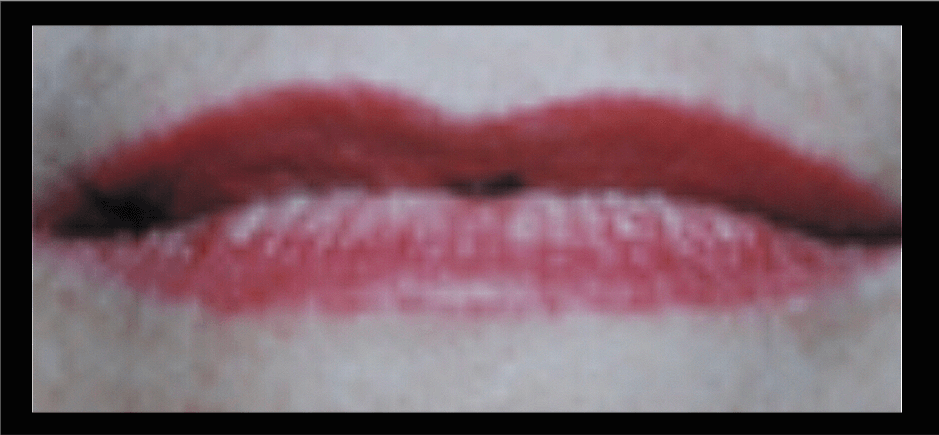
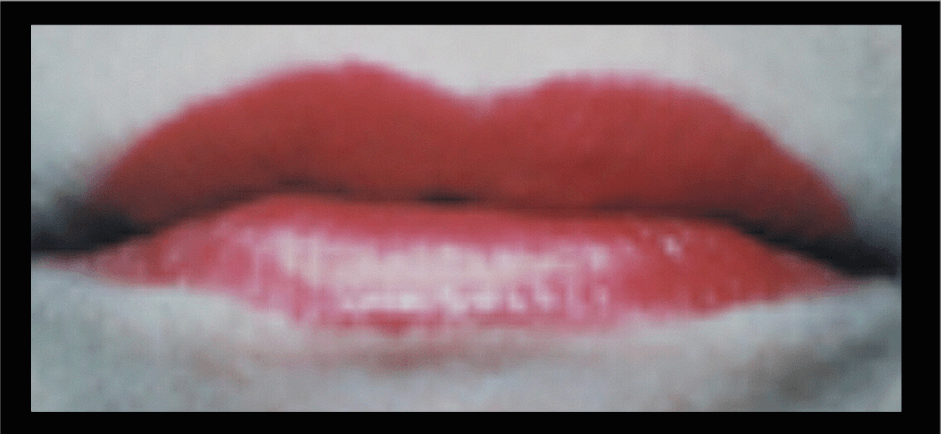
.
Purpose (Indications)
Reduces the appearance of facial lines and wrinkles
What It Does
Smooths facial lines, wrinkles, and scars and enhances the appearance of the lip border in one treatment
Replenishes the skin’s natural collagen support layer
Technique
Usually injected around the mouth, perioral and/or buccolabial folds
Recovery Time
Healing time varies, many people can return to work the same day
Recovery Instructions
Apply ice compresses overnight
Maximize movement to the area for next 24-48 hours
How Long It Lasts
Immediate, lasts up to 6 months
Microlipo injection is an advent of body liposuction. Fat cells are extracted and re-implanted in other areas of the body. Fat cells are very fragile and the “take rate” is approximately 60%. For facial microlipo injection, a topical anesthetic cream is applied over the stomach or thigh area, one to two hours prior to the procedure. Local anesthesia is injected [tumescent technique]. Following this a syringe is used to remove fatty tissue by an aspiration method which is then washed and reinjected into the buccolabial fold or the lip area. A dressing is applied and removed the next day, individuals need to apply ice compresses to the area overnight and minimize the amount of movement to the area for the next 24-48 hours after the procedure. At 6 to 8 weeks, the area is re-evaluated and may be able to be additionally improved by a second procedure at that time. This is due to the fact that the first procedure stimulates increased blood flow into the area, which facilitates “take” at the second procedure.
Additional techniques, which have been used for augmentation or to fill in the buccolabial folds, have been to use injectable collagen and dermal graphs. Dermal graphs are obtained by removing the epidermis from excised tissue such as tissue excised with the facelift procedure. This can easily be done with the carbon dioxide laser. The dermis is then implanted in the sub-dermal tissues. The take rates have varied between 30% and 60% in various studies. The problem has been the fact that the oil glands and hair follicles lie deep in the dermis and are not removed. For that reason, cysts can develop in the dermal implant resulting in localized infection and a poor “take rate.”
Facial Rejuvenation eBook
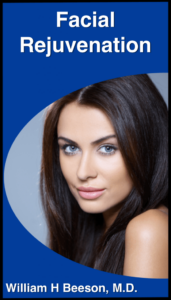
.
Skin Rejuvenation eBook
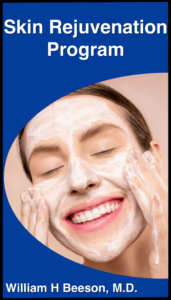
.
Bruising eBook
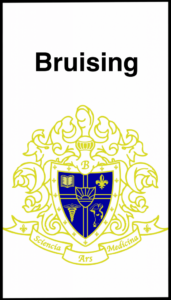
.
How to Use Make Up to Cover A Bruise
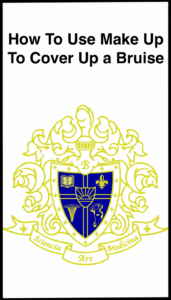
.
.
.
.
Schedule A Consultation Now!
Communication is not secure. Contacting the practice does not establish a physician/ patient relationship.*
.
For more information on procedures and wellness, visit our collection of free, downloadable eBooks
.
Follow us on Facebook for weekly tips on health and wellness.
.